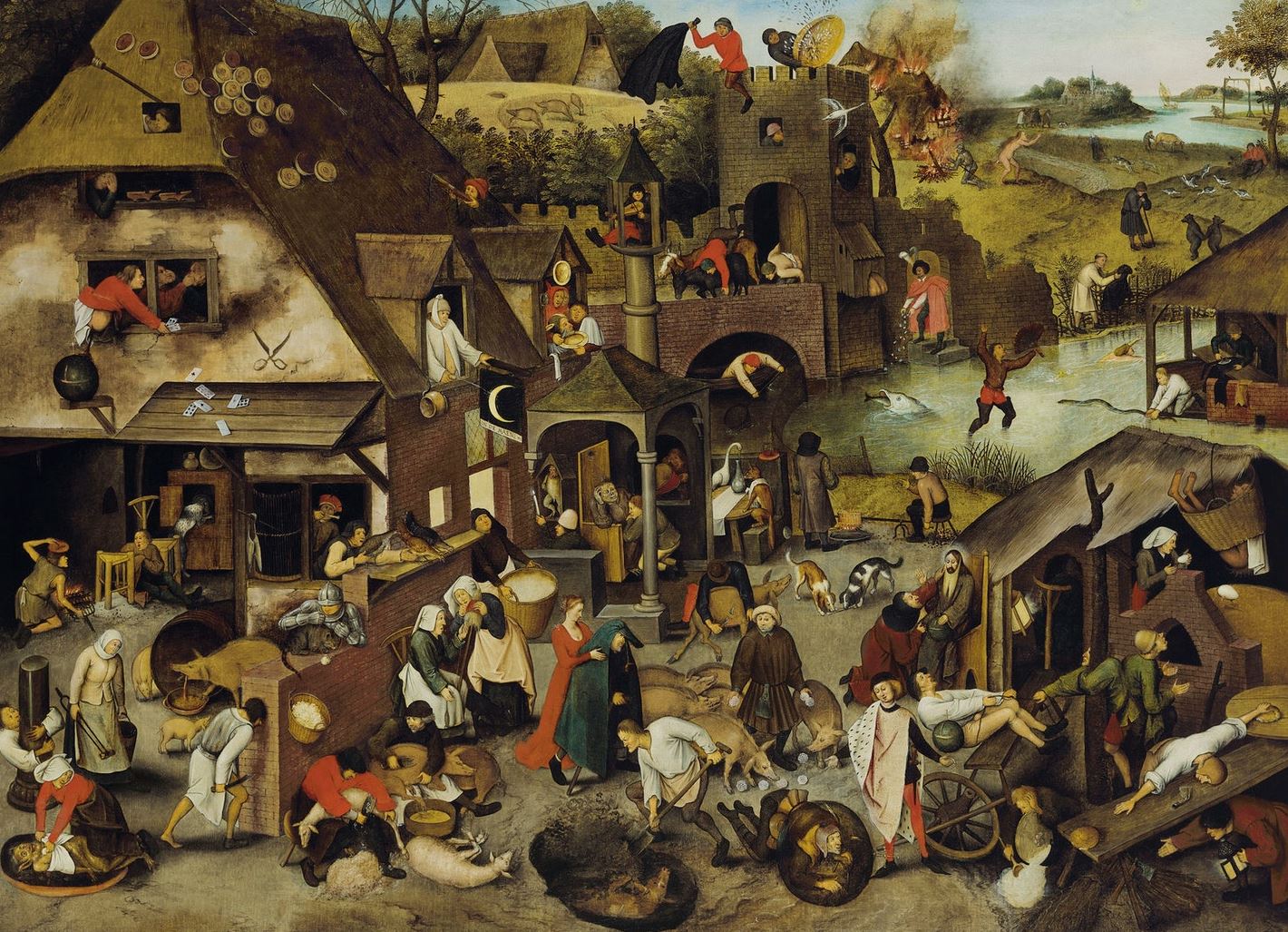But after a few years of underwhelming responses and sometimes just dead air, I’m giving up. I feel like they’re a prolonged performance of the ‘Guess what I’m thinking’ game, that Greg Ashman talked about here.
They can get in the bin with the Six Thinking Hats. Possibly this post will be met with, “Well, you’re just not doing it right,” as is often the case when practitioners query the efficacy of PBL or discovery learning. Here are my reasons:
1. Robust and insightful discussion seems to be based on the presence of a strong foundation of background knowledge - not something students will come to the topic with, for the most part.
If they weren’t so time consuming as an activity they might be a good diagnostic to confirm that yes, nobody knows much.

2. It’s very difficult with activities like ‘See Think Wonder’ for students to get beyond the literal. I’ve seen examples where students unpack various artworks, like the one above, to what end I’m still not sure - “I see a man shaped like a pretzel?”
Most student responses I have elicited feature an inflection that makes everything sound like a question. Again, “Is this what you want to hear, Ms Birch?”
3. The ‘thinking’ and ‘wondering’ rely largely on the responses of the sole savant in each class, who is expected to give the profound and insightful connections that bolster teacher faith and keep these routines alive.
Arbitrary coded labels like ‘Red Light, Yellow Light’ and ‘Think, Puzzle, Explore’ take so long to explain, and add to student cognitive load. They’re a meta guessing game rather than an instruction or thinking scaffold.
There has to be a more efficient and simpler way to introduce or consolidate a topic, for example discussion with co-creation of sensible notes to document thinking.
People have made careers out of these things. Many a LinkedIn profile makes claims to studying at Harvard when it’s more likely the case that leaders have simply completed short courses at the cost of thousands of air miles and tonnes of greenhouse gas.
I’m afraid these represent another shortcut to shallow ‘critical thinking’ (scare quote emphasis mine).
This article was first published in the author's blog.















